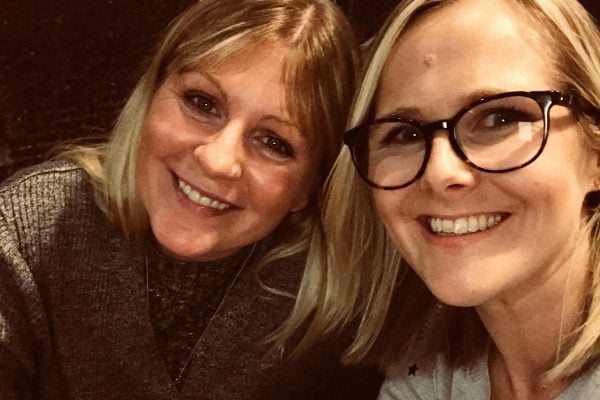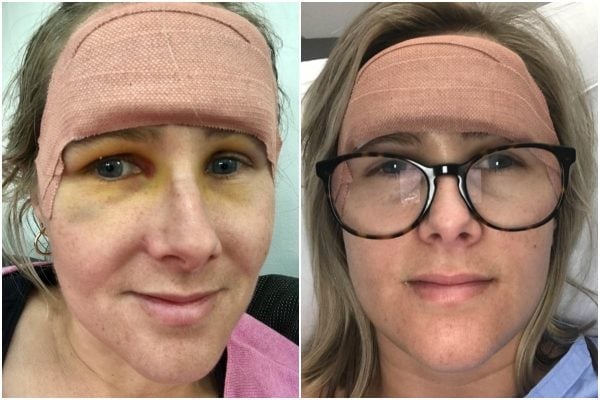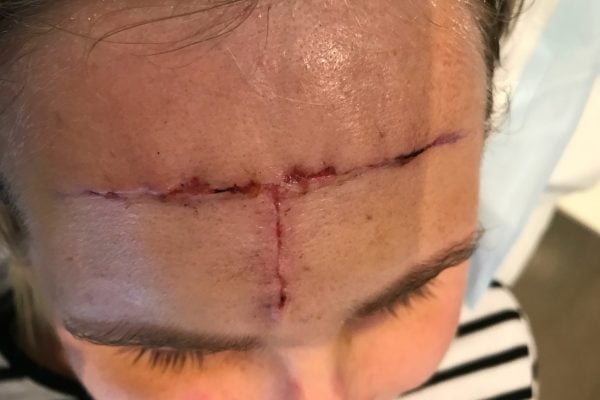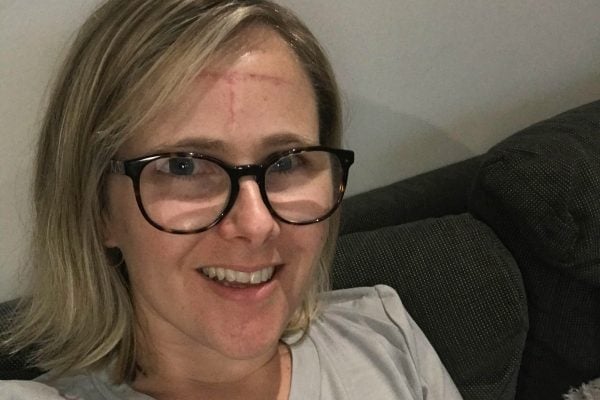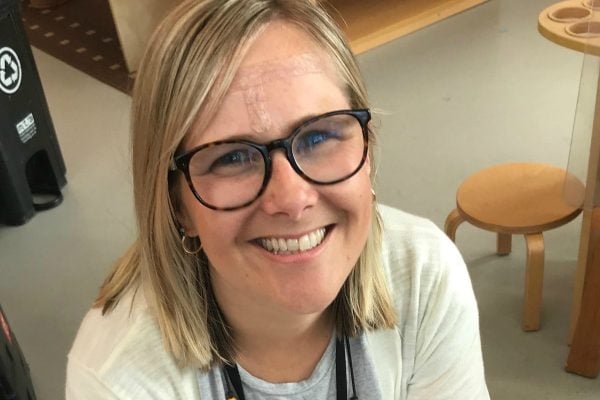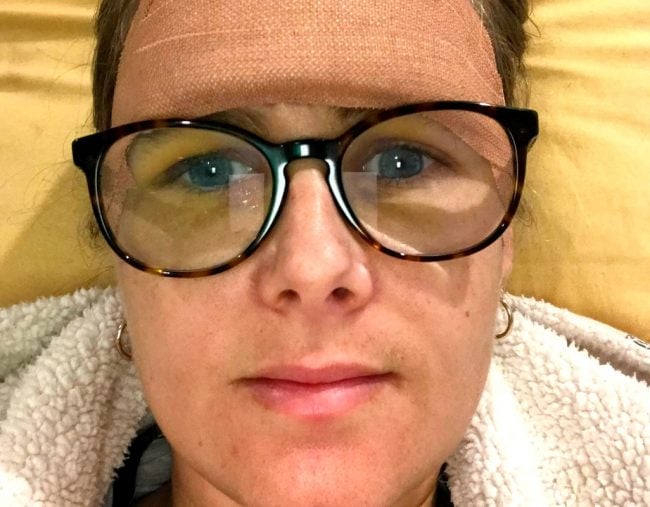
Melbourne woman Meghan Doherty, 34, had a small clear mole on her forehead since she was 17, and she’d never taken much notice of it.
Out of vanity, she’d enquired about whether to have it taken off a number of years ago, but decided against it learning that the scar would be bigger than the mole itself.
Accepting it as part of her character, she learnt to live with it, and as a kindergarten teacher and mother of two small children, she was used to the kids ‘beeping’ it occasionally – all part of the fun.
“One of my dad’s good mates, recently passed away from skin cancer. It crossed my mind to get the mole checked on my forehead. Finding time around the children and work, as you know, is always hard, you always put yourself last on the list, so I was in no rush. I finally went to the GP and he said I needed to get it looked at by a specialist.”
